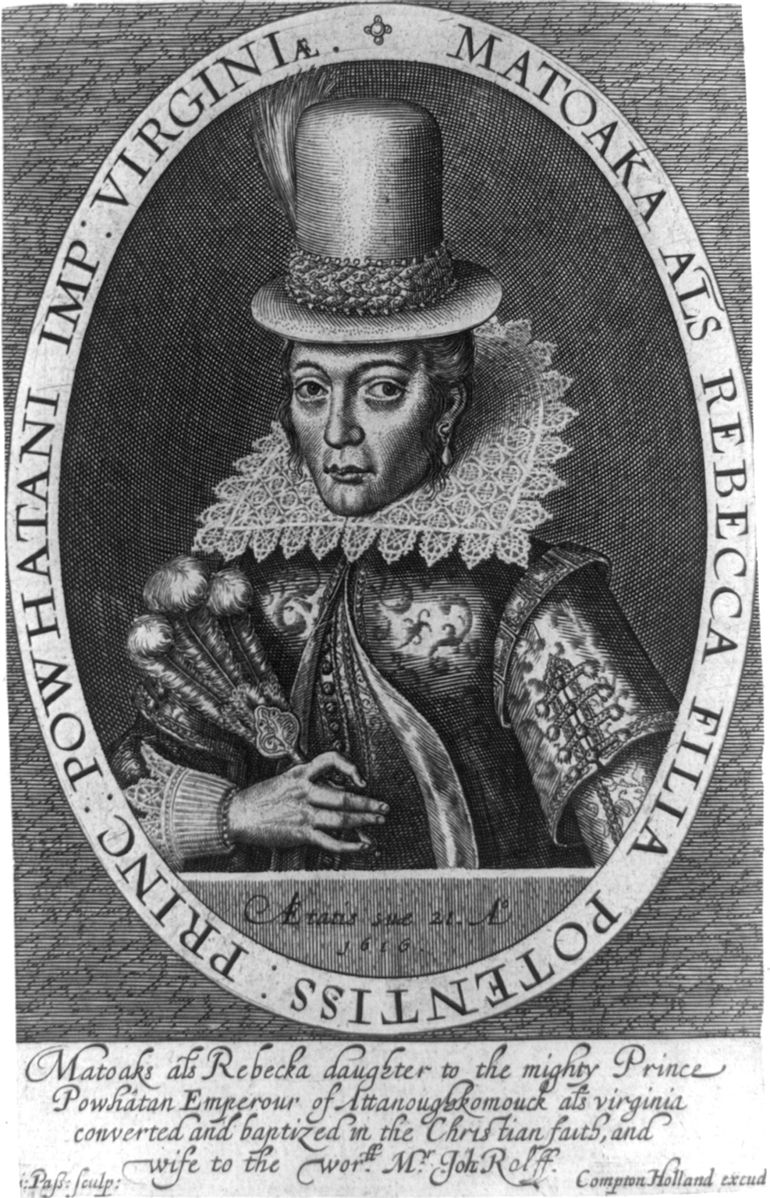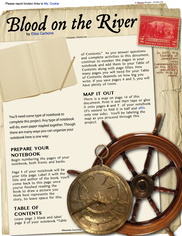|
After the release of the Disney movie Pocahontas, many felt the true story was ignored. The following was written by Chief Roy Crazy Horse and appeared on the www.powhatan.org website that is no longer published. It has been shortened for ease of readability by students, some vocabulary has been simplified, grammar and spelling errors have been fixed, and images added for visual appeal. "Pocahontas" was a nickname, meaning "the naughty one" or "spoiled child." Her real name was Matoaka. The legend is that she saved a heroic John Smith from being clubbed to death by her father in 1607—she would have been about 10 or 11 at the time. The truth is that Smith's fellow colonists described him as an abrasive, ambitious, self-promoting mercenary soldier. Of all of Powhatan's children, only "Pocahontas" is known, mostly because she became the hero of Euro-Americans as the "good Indian," one who saved the life of a white man. Not only is the "good Indian/bad Indian theme" given new life by Disney, but the history, as recorded by the English themselves, is false, written more in the name of "entertainment" than truth. The first time John Smith told the story about this rescue was 17 years after it happened, and it was but one of three reported by Smith [who was known to brag] claiming he was saved from death by a famous woman. Yet in an account Smith wrote after his winter stay with Powhatan's people, he never mentioned such an incident. In fact, the starving adventurer reported he had been kept comfortable and treated in a friendly fashion as an honored guest of Powhatan and Powhatan's brothers. Most scholars think the "Pocahontas incident" would have been highly unlikely, especially since it was part of a longer account used as reason to wage war on Powhatan's Nation. Euro-Americans must ask themselves why it has been so important to raise Smith's fibbing to status as a national myth worthy of being recycled again by Disney. Disney even improves upon it by changing Pocahontas from a little girl into a young woman.
Two years later on the spring of 1616, Rolfe took her to England where the Virginia Company of London used her in their propaganda campaign to support the colony. She was wined and dined and taken to theaters. It was recorded that on one occasion when she encountered John Smith (who was also in London at the time), she was so furious with him that she turned her back to him, hid her face, and went off by herself for several hours. Later, in a second encounter, she called him a liar and showed him the door. Rolfe, his young wife, and their son set off for Virginia in March of 1617, but "Rebecca" had to be taken off the ship at Gravesend. She died there on March 21, 1617 at the age of 21. She was buried at Gravesend, but the grave was destroyed in a reconstruction of the church. It was only after her death and her fame in London society that Smith found it convenient to invent the tall tale that she had rescued him. History tells the rest. Chief Powhatan died the following spring of 1618. The people of Smith and Rolfe turned upon the people who had shared their resources with them and had shown them friendship. During Pocahontas' generation, Powhatan's people were killed by warfare and disease and those left were forced to leave their lands. A clear pattern had been set which would soon spread across the American continent. Chief Roy Crazy Horse
Comments are closed.
|
Author
I often struggle to find websites with thorough explanations in simple language to help kids understand historical events or scientific concepts, so I decided to create some of my own! -Cookie Davis
Archives
March 2024
|



 RSS Feed
RSS Feed